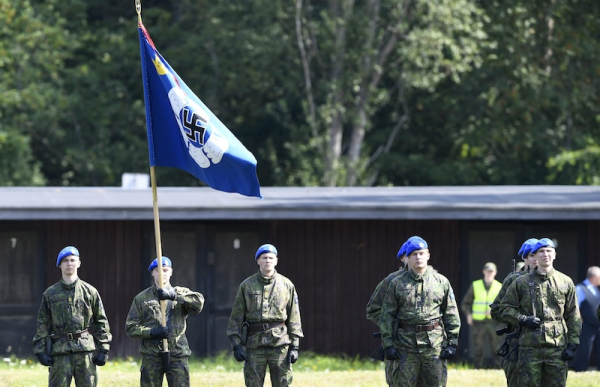Finnish Air Force to remove swastikas from unit flags, Yle reports

Yle: Air Force to stop using swastika on unit flags. Photo: Martti Kainulainen / Lehtikuva
- Next Article Helsinki launches new strategy as drug-related disturbances surge
The Finnish Air Force will remove swastikas from its unit flags as part of an internal flag reform process. The decision follows concerns about the symbol’s impact during cooperation with international partners, Colonel Tomi Böhm told Finnish broadcaster Yle.
Böhm, recently appointed commander of the Karelia Air Command, confirmed that the removal is part of a broader review of military flag use. The decision is not politically mandated but follows practical considerations in international settings.
“There have been awkward situations,” Böhm said in the interview. “We could continue using this flag, but in some cases it causes discomfort for foreign visitors. It is reasonable to adapt to the times.”
The exact schedule for the change is unclear. According to Böhm, the Air Force Headquarters has already removed the swastika from its own use, and the reform now extends to unit flags across the branch.
The Karelia Air Command still displayed the existing flag featuring a swastika during a change-of-command ceremony in Siilinjärvi this week. A video from the event was published by Yle.
The swastika has been in Finnish military use since 1918, when it was introduced as a symbol in aircraft. The Air Force stopped using it on planes in 1945, but it remained in flags adopted during the 1950s. The symbol, globally associated with Nazi Germany, has attracted criticism despite its earlier use in other cultural contexts.
Yle reported that the decision to initiate the removal followed repeated incidents where the presence of the symbol caused discomfort, especially during cooperation with American forces and other NATO partners.
“Political pressure has not influenced this,” Böhm said. “The world has changed, and we live according to our time.”
Public discussion about the Air Force’s use of the swastika resurfaced following the publication of a recent book Hakaristin historia by University of Helsinki world politics professor Teivo Teivainen. The book re-examines the use of the swastika in Finnish institutions and its historical implications.
No formal legislative or ministerial order has been issued concerning the flag change, and the reform remains an internal military initiative. Böhm said he hopes the change will be implemented during his tenure as commander, but gave no specific timeline.
The Lapland and Satakunta Air Commands also feature swastikas in their current flags. These units, along with Karelia Air Command, form the core operational structure of the Finnish Air Force.
The Defence Forces of Finland have previously stated that their use of the swastika predates its adoption by Nazi Germany and is tied to historical events linked to Finnish independence. The original symbol was a blue swastika on a white background, given as a good luck charm by Swedish Count Eric von Rosen, who donated the first aircraft to the Finnish military in 1918.
Despite these origins, the image’s global association with Nazi ideology has become increasingly problematic in official settings. Finnish defence officials have confirmed that no new materials bearing the symbol are being produced.
The Air Force’s review is part of a broader trend in Finnish military institutions to reconsider legacy symbols that may hinder international cooperation. The Defence Forces’ annual flag parade still features the current unit flags, but updates are expected once the reform is completed.
The decision aligns with Finland’s expanding role in NATO, which it formally joined in April 2023. Participation in joint exercises and operations has increased, raising the profile of military symbols during international engagements.
Yle first reported the development on Thursday, citing internal
Source: www.helsinkitimes.fi
